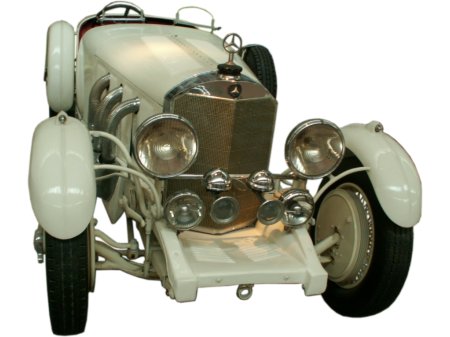 Mercedes 27/180/250 HP Mercedes 27/180/250 HP



The National Socialists should have the German racing sport and so Mercedes-Benz particularly promoted. This is certainly correct. But anyone who thinks forget a little that this carmaker is already very successful before 1933. The alwayswhite racing cars beat excellently against the blue (F), red (I) and green (GB). Only in 1924 a German factory team may go racing again after the restrictions of the First World War. Until 1929, an extremely successful team of several factory drivers were established, particularly where Rudolf Caracciola with his achievements and popularity stands out. From racer to talented racing manager Alfred Neubauer changes, the later will have significantly influence of the fortunes of Mercedes in motor racing.
1928 is the year of creation the 710 SS, which engine contributes most to the racing successes. Although with moderate displacement only slightly larger than its predecessor, it seems to take in the stability an outstanding position. After all the vehicles are almost also sold to private individuals, unchanged in principle and far not all take part with them in races. Some need even the enormous performance to let himself driven by a chauffeur fairly quickly through the area with caroches of more than 3 tons of total empty weight.
After all, now will also have the limousines front wheel brakes, what is not naturally for their predecessors. The namely were so far reserved for the racing versions, which the pictured above comes already fairly close if you does not think of the standard fog lamps and the supertone horn-fuss. It has for the 710-SS series typical higher radiator, although neither an additional engine cooling nor for this a body a higher belt line are necessary.
The chassis is lower than ever, the tank again enlarged, and probably for weight distribution reasons placed quitefar back in the rear. For the probably one of the fastest production cars of the time apparently nobody expects a rear-end collision. With frequent use of the compressor must be expected around 30 l/100 km. But who cares in view the original price, who incidentally unlike today, at least includes more than a complete equipment and if required also special requests.
|